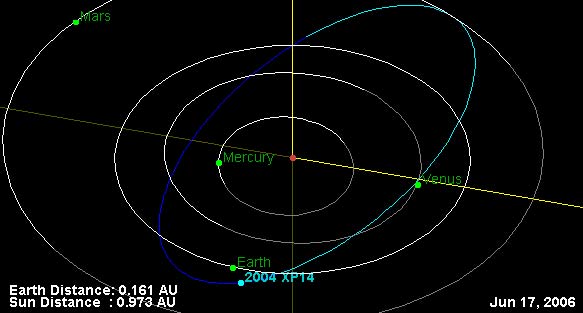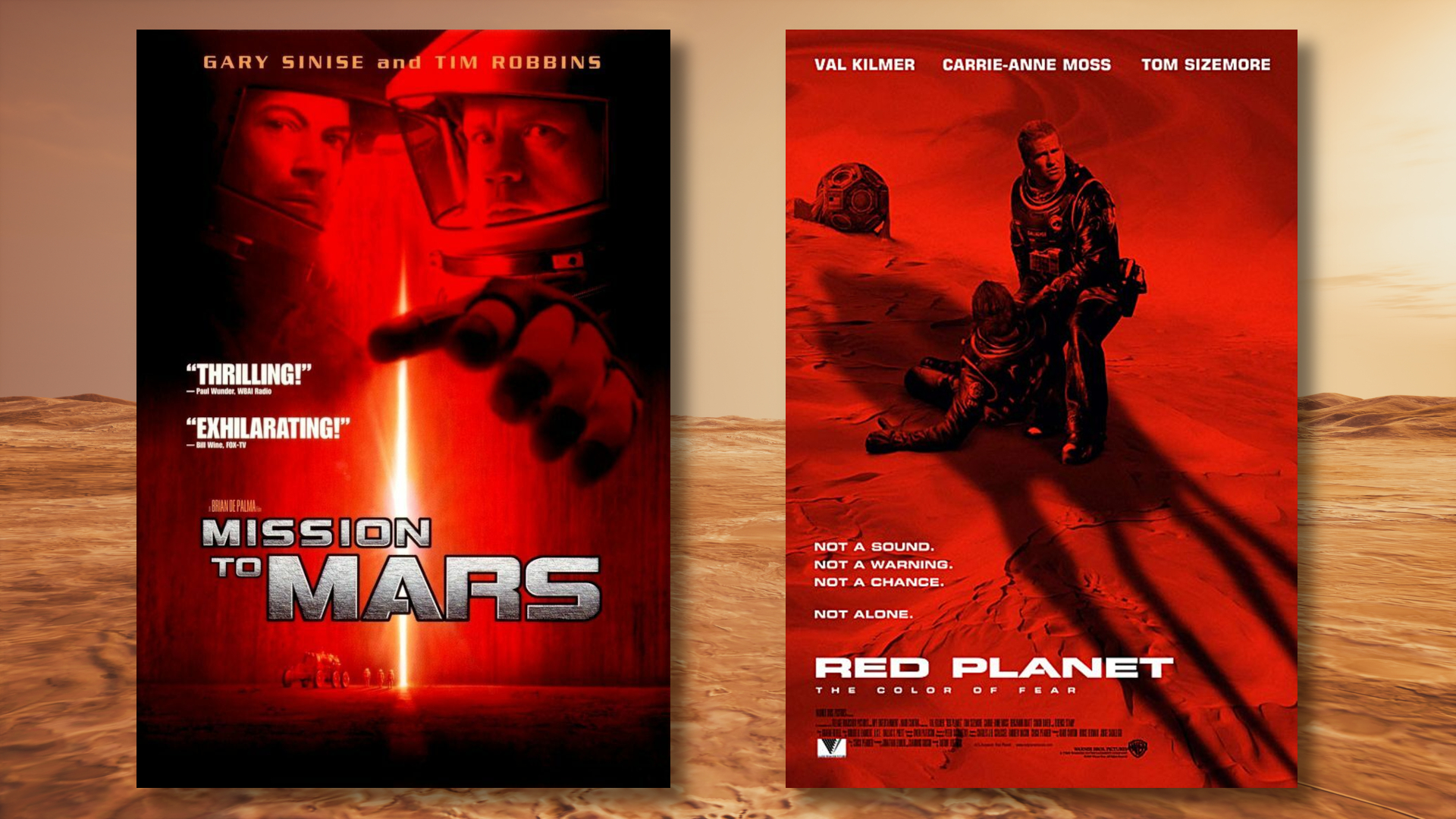
An asteroid possibly as large as a half-mile or more in diameter is rapidly approaching the Earth. There is no need for concern, for no collision is in the offing, but the space rock will make an exceptionally close approach to our planet early on Monday, July 3, passing just beyond the Moon's average distance from Earth.
Astronomers will attempt to get a more accurate assessment of the asteroid's size by "pinging" it with radar.
And skywatchers with good telescopes and some experience just might be able to get a glimpse of this cosmic rock as it streaks rapidly past our planet in the wee hours Monday.
The asteroid, designated 2004 XP14, was discovered on Dec. 10, 2004 by the Lincoln Laboratory Near Earth Asteroid Research (LINEAR), a continuing camera survey to keep watch for asteroids that may pass uncomfortably close to Earth.
Although initially there were concerns that this asteroid might possibly impact Earth later this century and thus merit special monitoring, further analysis of its orbit has since ruled out any such collision, at least in the foreseeable future.
Size not known
Asteroid 2004 XP14 is a member of a class of asteroids known as Apollo, which have Earth-crossing orbits. The name comes from 1862 Apollo, the first asteroid of this group to be discovered. There are now 1,989 known Apollos.
Get the Space.com Newsletter
Breaking space news, the latest updates on rocket launches, skywatching events and more!
The size of 2004 XP 14 is not precisely known. But based on its brightness, the diameter is believed to be somewhere in the range of 1,345 to 3,018-feet (410 to 920 meters). That's between a quarter mile and just over a half-mile wide.
Due to the proximity of its orbit to Earth [Map] and its estimated size, this object has been classified as a "Potentially Hazardous Asteroid" (PHA) by the Minor Planet Center in Cambridge, Massachusetts. There are currently 783 PHAs.
The latest calculations show that 2004 XP14 will pass closest to Earth at 04:25 UT on July 3 (12:25 a.m. EDT or 9:25 p.m. PDT on July 2). The asteroid's distance from Earth at that moment will be 268,624 miles (432,308 km), or just 1.1 times the Moon's average distance from Earth.
Spotting 2004 XP14 will be a challenge, best accomplished by seasoned observers with moderate-sized telescopes.
On April 13, 2029, observers in Asia and North Africa will have a chance to see another asteroid, but without needing a telescope. Asteroid 99942 Apophis, about 1,000 feet (300 meters) wide, is expected to be visible to the naked eye as it passes within 20,000 miles (32,000 km). Astronomers say an asteroid that large comes that close about once every 1,500 years.
Observing plans
As 2004 XP14 makes its closest approach to Earth, astronomers will attempt to gauge its size and shape by analysis of very high frequency radio waves reflected from its surface.
Such radar measurements of the exact distance and velocity of the asteroid will allow for precise information on its orbit. From this scientists can also discern details of the asteroid's mass, as well as a measurement of its density, which is a very important indicator of its overall composition and internal structure.
Astronomers plan to utilize NASA's 70-meter (230-foot) diameter Goldstone radar, the largest and most sensitive antenna in its Deep Space Network. Located in California's Mojave Desert, the Goldstone antenna has been used to bounce radio signals off other Near-Earth asteroids many times before, and it is now being readied to "ping" 2004 XP14 on July 3, 4 and 5.
Augmenting the Goldstone observations will be radar observations scheduled at Evpatoria in the Ukraine, commencing several hours prior to the July 3 observations at Goldstone.
Editor's Note: A SPACE.com viewer's guide for 2004 XP14 will be presented in Joe Rao's weekly Night Sky column on Friday, June 30.
Join our Space Forums to keep talking space on the latest missions, night sky and more! And if you have a news tip, correction or comment, let us know at: community@space.com.

Joe Rao is Space.com's skywatching columnist, as well as a veteran meteorologist and eclipse chaser who also serves as an instructor and guest lecturer at New York's Hayden Planetarium. He writes about astronomy for Natural History magazine, Sky & Telescope and other publications. Joe is an 8-time Emmy-nominated meteorologist who served the Putnam Valley region of New York for over 21 years. You can find him on Twitter and YouTube tracking lunar and solar eclipses, meteor showers and more. To find out Joe's latest project, visit him on Twitter.
